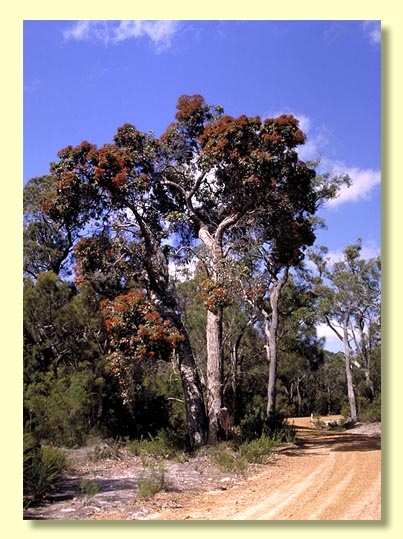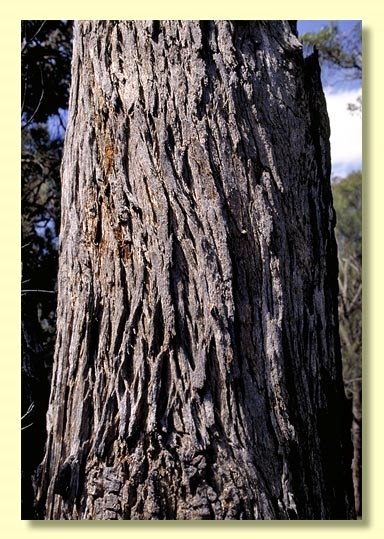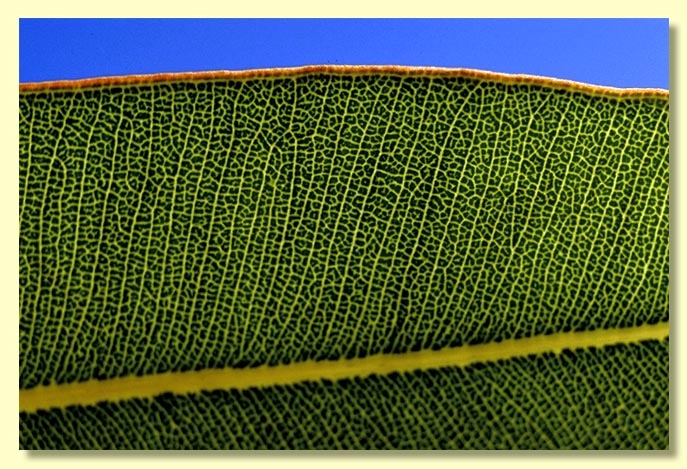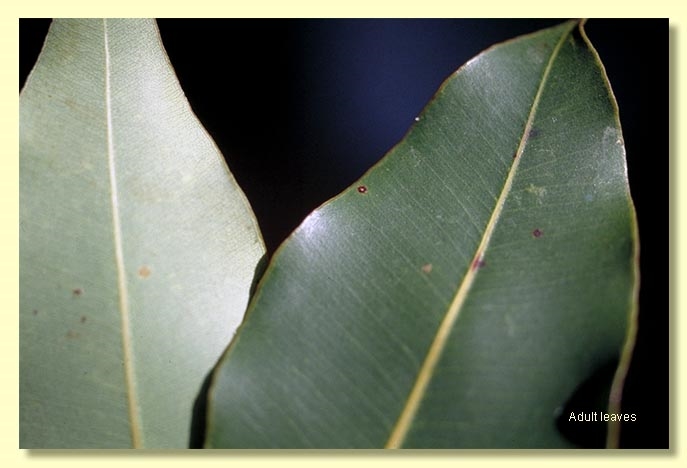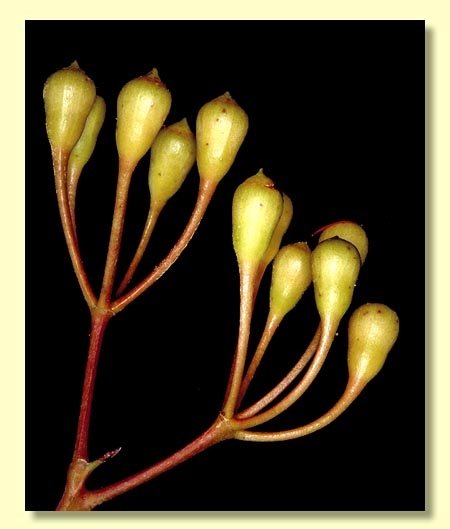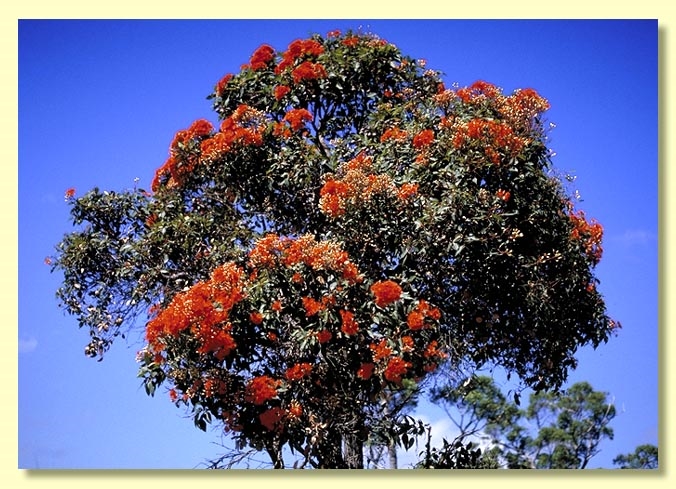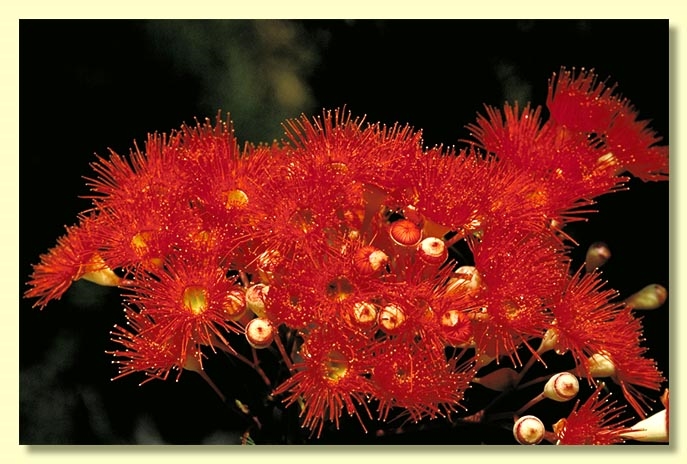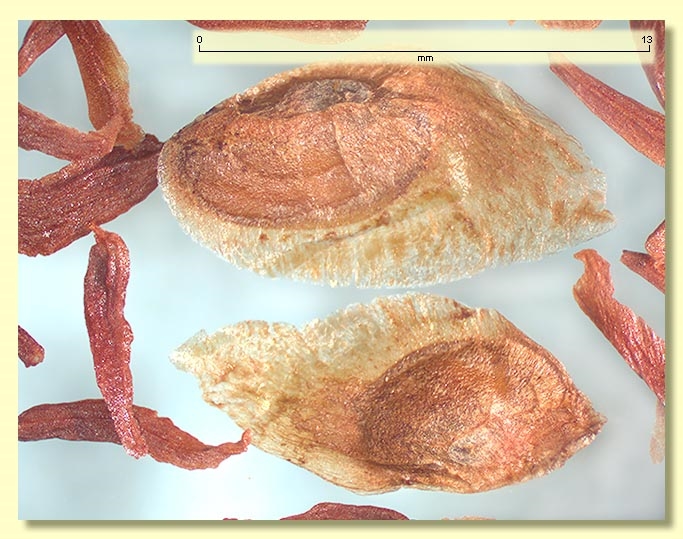Euclid - Online edition
Corymbia ficifolia
Corymbia | Rufaria
Eucalyptus ficifolia F.Muell., Fragm. 2: 85 (1860). T: Western Australia: Broke Inlet, G. Maxwell s.n.; holo: MEL; iso: K.
Eucalyptus ficifolia F.Muell. var. carmina Blakely, Key Eucalypts: 85 (1934). T: cultivated New South Wales: Domain plot, tree on W. side, W.F. Blakely, 2 Jan. 1925; lecto: NSW [fide K.D.Hill & L.A.S.Johnson, Telopea 6: 245 (1995)].
Bark rough to the small branches, fibrous, rarely tessellated, brown to grey-brown.
Branchlets lacking oil glands in the pith.
Juvenile growth (coppice or field seedlings to 50 cm): stems round in cross-section, sometimes scabrid on the lower portion; juvenile leaves petiolate, alternate, ovate to broadly lanceolate, bases peltate or cordate to rounded to truncate, lower leaves sometimes scabrid.
Adult leaves alternate, petioles 0.8–2 (2.5) cm long; blade ovate to broadly lanceolate, 7–13(15) cm long, (2.2)2.5–5(5.5) cm wide, flat to slightly undulate, dull to slightly glossy, discolorous, darker green above, paler below, base tapering to the petiole, occasionally rounded, margin entire, apex acute, side-veins penniveined, reticulation very dense, intramarginal vein present but very close to the leaf margin (almost confluent), oil glands obscure or absent, island.
Inflorescence terminal compound, peduncles 1.5–3.2 cm long, buds 7 per umbel, pedicels 1.3–2.7(4) cm long. Mature buds obovoid to pyriform, 1.2–1.8 cm long, 0.6–0.8 cm wide, surface smooth (not scurfy), scar absent (both opercula shed together at flowering), operculum rounded to flattened, stamens inflexed, anthers oblong, versatile, dorsifixed, dehiscing by longitudinal slits, style long and straight, stigma papillate (mop-like), locules commonly 3 (rarely 4), ovules not in regular rows. Flowers bright red to pink to orange.
Fruit pedicellate (pedicels 1.5–2.7(4)) cm long, urceolate (rarely truncate-ovoid to truncate-globose), 2–4.2 cm long, 1.8–3 cm wide, disc vertically descending, valves 3 (rarely 4), deeply enclosed.
Seeds dark brown to black, ellipsoidal with terminal wing, often extending narrowly along margins also, 12–18 mm long (including wing).
Cultivated seedlings (measured at node 10): cotyledons reniform to orbicular; stems round in cross-section, scabrid to ca the 6th node; leaves petiolate, opposite for the first 2 nodes then alternate, broadly lanceolate, 6.5–14 cm long, 3.5–6 cm wide, dull to slightly glossy green, base on some individuals peltate, others lobed to rounded, lamina scabrid till ca node 8.
Flowering has been recorded in January, February, March, April, May and September.
Corymbia ficifolia is very common and popular in horticulture, widely used throughout cooler coastal southern Australia as a street tree because of its massed colourful flowers that are highly attractive to humans, lorikeets and honeyeaters.
A small tree of very restricted, subcoastal distribution south-east of Perth, east of Mt Frankland and Walpole, near Albany and in the Stirling Range. The bark is rough, longitudinally furrowed, or less often tessellated on larger trees. The adult leaves of Corymbia ficifolia are strongly discolorous being darker green above, paler below, stiff, with dense pinnate venation and usually lacking oil glands. The flowers are brilliantly coloured red or pinkish or orange whilst the seeds are prominently winged like those of the desert and northern bloodwoods.
C. ficifolia is one of three species of bloodwood found in the south-west of Western Australia. The others both have wingless seeds. C. haematoxylon, which has a western coastal distribution from Mt Lesueur south to near Busselton, differs further in its distinctly tessellated bark, white flowers, and fruit much narrowed at the top, and Marri, C. calophylla, which can be a much taller tree, has tessellated bark, thinner glossy leaves with clear oil glands. C. calophylla ranges from Geraldton to near Albany.
MORE ABOUT CORYMBIA
MORE ABOUT RED BLOODWOODS

